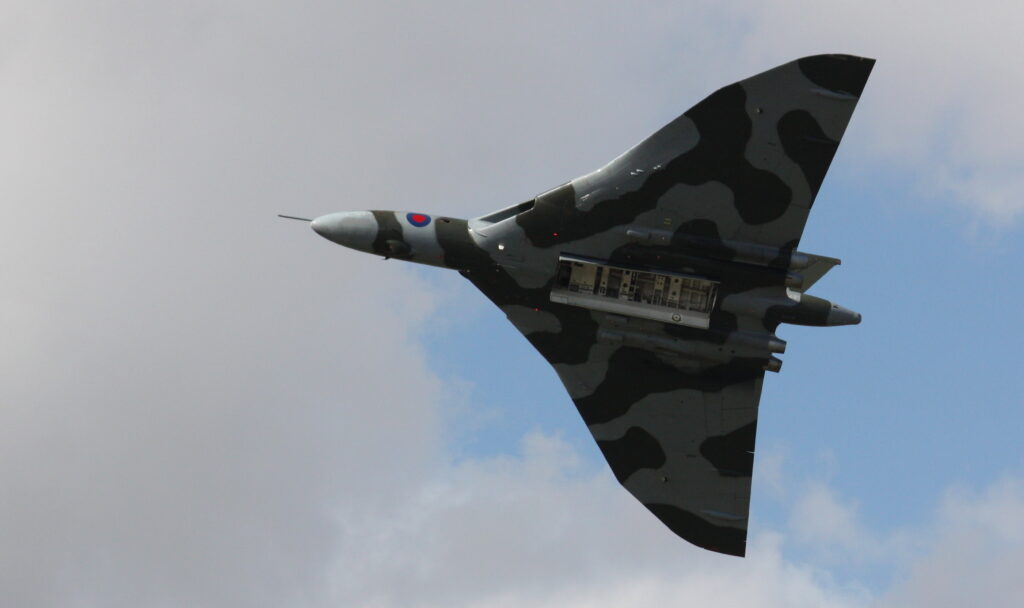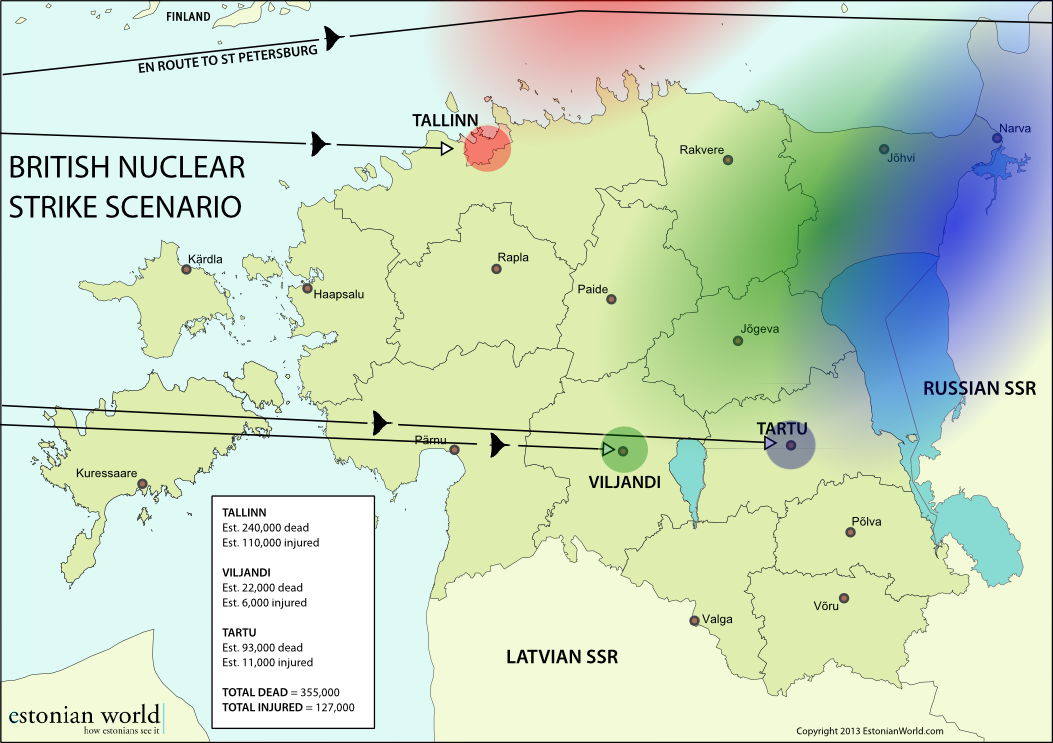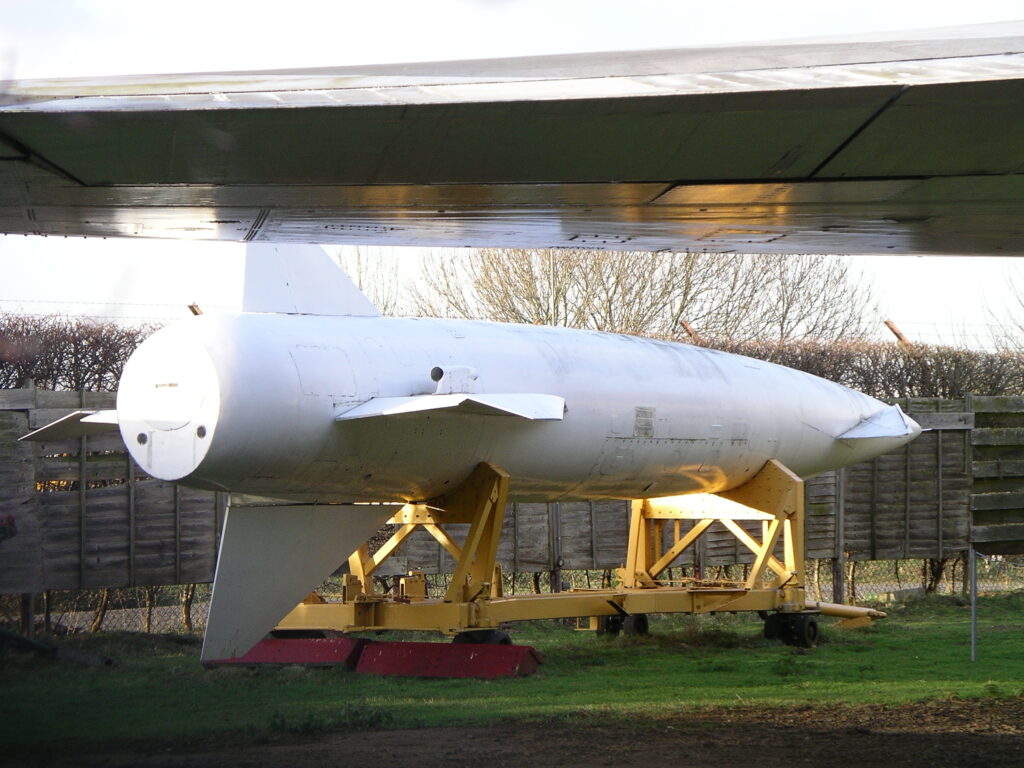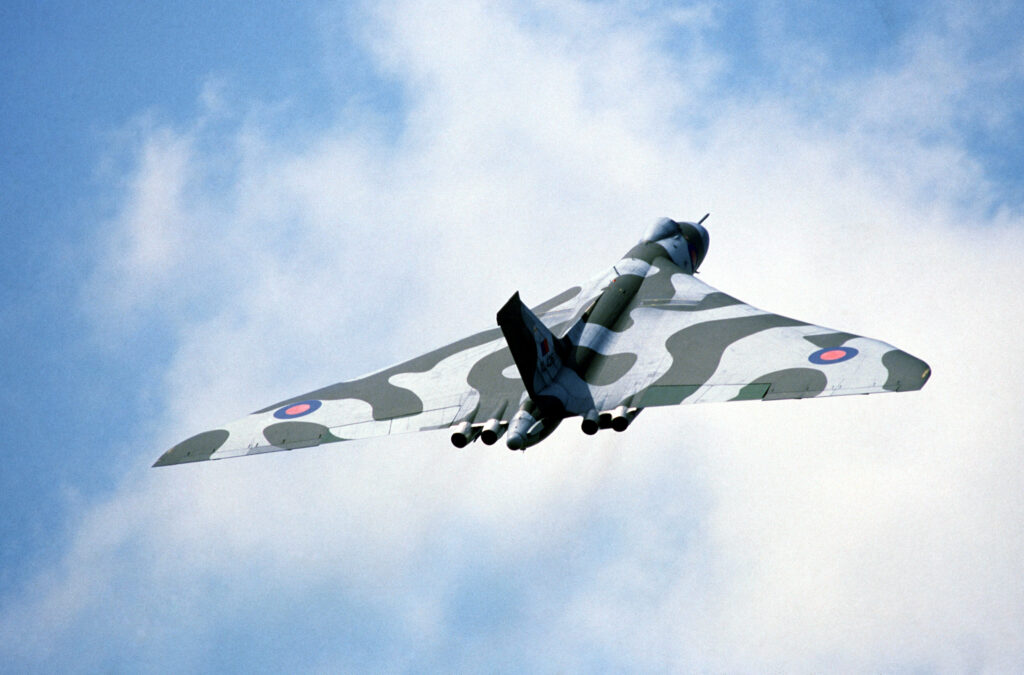While Estonia was an unwilling member of the Soviet Union, from a military perspective it was a legitimate target in the event of a Soviet nuclear first-strike attack on the UK or its NATO allies.
I will never forget the first time I saw a Vulcan bomber take-off. Standing next to the runway at RAF Boscombe Down (as it then was), wearing ear protectors far too large for my small ears, I watched its majestic and graceful frame ascend into the sky with a dexterity not normally seen in heavy bombers.
I was awestruck. Despite the Vulcan having already retired six years before, it was (and still is) chilling to think of the destruction these aircraft might have unleashed on the world had the chess-like brinkmanship of the Cold War played out differently.
Vulcan bombers
During the 1960ies, the Vulcan bomber formed the backbone of the British nuclear fleet and, at any given moment, a certain number were at a state of permanent readiness.

In times of heightened tension, they could be airborne within two minutes – the shortest warning given of a Soviet nuclear attack was estimated to be three and a half minutes. Once airborne, they would have flown at over 40,000 feet over the North Sea to southern Norway until they reached the “positive release line”, beyond which they would not fly unless a given a positive command to do so.
Once this invisible line was crossed, the bombers would fly around the coast of neutral Sweden until they were over the island of Gotland where they would split up and head for their individual targets in the Soviet Union. In the first set of strikes, three bombers would have been dispatched to attack Tallinn, Tartu and Viljandi.
While Estonia was an unwilling member of the Soviet Union, from a military perspective it was a legitimate target in the event of a Soviet nuclear first-strike attack on the UK or its NATO allies. Extensively militarised and part of the Baltic Military District, it was home to at least six air interception squadrons, heavy bombers and units of the Strategic Rocket Forces.

The British Vulcans were armed with Blue Steel stand-off missiles (“stand-off” meaning they could be deployed at a safe distance for the Vulcan to be able to escape the resultant explosion) which had an explosive yield of approximately 1.1 megatons. In comparison, “Little Boy”, the atomic bomb dropped on Hiroshima, Japan, had an explosive yield of just 0.16 megatons.
350,000 people would have been killed
There is no doubt that the effects of these strikes on Estonia would have been devastating. Approximately 350,000 people would have been killed just from the explosion itself. If you factor in the human cost of nuclear fallout for the surviving population (had there been one), this figure can be safely doubled. Fallout from the bomb dropped on Tallinn would also have reached Helsinki and Southern Finland.
Simultaneously, nuclear weapons would have been dropped on strategic targets in Latvia, Lithuania, Belarus and, of course, Russia. The scale of devastation would have been catastrophic.
So next time you’re are on a plane, enjoying the sights of Estonia and the Baltic Sea from the air, remember this article and try to imagine the view with the terrifying overlay of nuclear fallout and mushroom clouds.
A note on the illustration
In creating the illustration, I have made certain assumptions. Firstly, that the Vulcans that were to target Estonia were equipped with Blue Steel “air-burst” nuclear stand-off weapons – this is the most likely scenario. Air-burst nuclear weapons detonate in the air over their target and the amount of fallout is reduced. Secondly, the number of casualties from a nuclear blast is difficult to calculate.

The figures here should be regarded as reasonable estimates, but necessary assumptions were made, especially with regard to the daytime populations of Tallinn, Tartu and Viljandi. Any miscalculation is likely to result in an underestimation of the human tragedy involved.
It is also important to note that neither the short nor long-term effects on health from nuclear fallout have been taken into consideration. Fallout is shown on the map by the opaque clouds, shaded according to the relevant nuclear target.


Thanks Chris, great article – may I ask, what was your source for this information? Also, given the massive fallout radius, how would countries such as Norway, Sweden and Finland have been compensated for damage caused by a projected nuclear attack on, for example, Tallinn?
They would have been compensated by russian rockets and bombs on Helsinki, Tampere, Stockholm etc :v
Thanks! I don’t think that such issues entered the minds of Cold War planners. As Western nuclear policy was always one of never being the aggressor, any action taken would have been in response to the Soviets. Hence, any Western nuclear strike on the Baltics is likely to have occurred minutes after Soviet bombs started falling on the UK.
Interestingly, the US and UK did have a secret agreement with Sweden which was made public in the early ’90s. The gist of it was that should the Soviet Union have invaded or tried to invade Sweden, the West would respond with conventional and nuclear weapons against the Baltic states, which was the most likely staging point for such an invasion. US submarines armed with nukes were situated off the coast of Sweden for some time.
My source was an ex-Vulcan pilot who confirmed that a map I had already acquired through private means was accurate and added some details of his own.
Regards the source, if you watch the BBC Two programme “Cold War, Hot Jets”, during Episode 2 a Vulcan pilot says the following when asked about nuclear targets: “St. Petersburg was one. Kaliningrad…and all the capitals in the Baltics”. Eerily matches what my (different) v-bomber pilot said to me.
The fukkan occupying-Russkies had built a huge secret strategic air base (Tambov-type) for nuclear weapons right smack in the middle of Estonia’s cultural city, Tartu….. well, right on the outskirts of city center. The Russky bastards flew their heavy-bomber training missions with TU-16s (Badger) out of Red Army’s Raadi military airport right over Tartu city proper. The Russkies’ favorite game in the 1960s and 1970s was to accelerate such aerial military training especially on Sunday mornings. I assume they wanted that the indigenous Lutheran population would bow to Russky-style atheism and savor Soviet belligerence rather than go to church. The stench of aviation fuel permeated the city.
–
I do not have any animosity at all against the Brits for having targeted the secret nuclear Raadi military airport. Such targeting was absolutely necessary to protect the free world from the Kremlin’s vicious plans. It’s crystal clear that the so-called “targeting” by the Brits of Russky installations near Viljandi and Tallinn were, equally, warranted.
–
The atrocities and crimes committed against the indigenous Estonians during the half-century of occupation are innumerable and are well documented. The Kremlin has to this day not begged forgiveness nor atoned for these genocidal crimes, not to speak of the mass-deportations of Estonian civilians to Siberia, the half-century of enslavement, etc., etc.
Barbarians, nothing less!
Respectfully,
A former political child-refugee from Estonia.
While to the credit of the Brits, their fleet helped Estonia attain independence in the 1918-1920 period, they generally seem to have a bit of a penchant for bombing us or helping to bomb us. I don’t refer so much to ancient naval forays against Paldiski a long time ago, when Estonia was a part of the Tsarist Empire. More precisely I mean WW II Allied air raids on Tallinn and Pärnu in 1944, and apparenty assisting in the utter destruction of Narva in the Spring of 1944. Beautiful and ancient Narva was known as the “baroque pearl of the Baltic” until she was bombed into oblivion on March 6, 1944, primarily by the Soviet Air Force, but also with a certain involvement by the Brits and the Canadians.
http://www.estonica.org/en/The_Red_Army_in_wrecked_Narva_in_1944/
http://www.hot.ee/fone/pomm_00.htm
“but also with a certain involvement by the Brits and the Canadians.”
Myth.